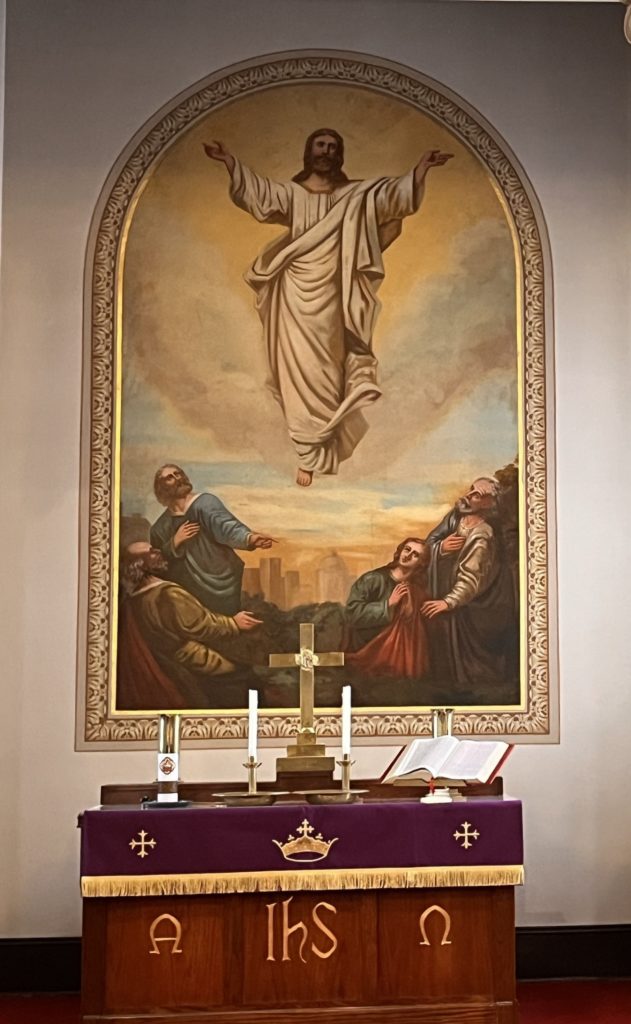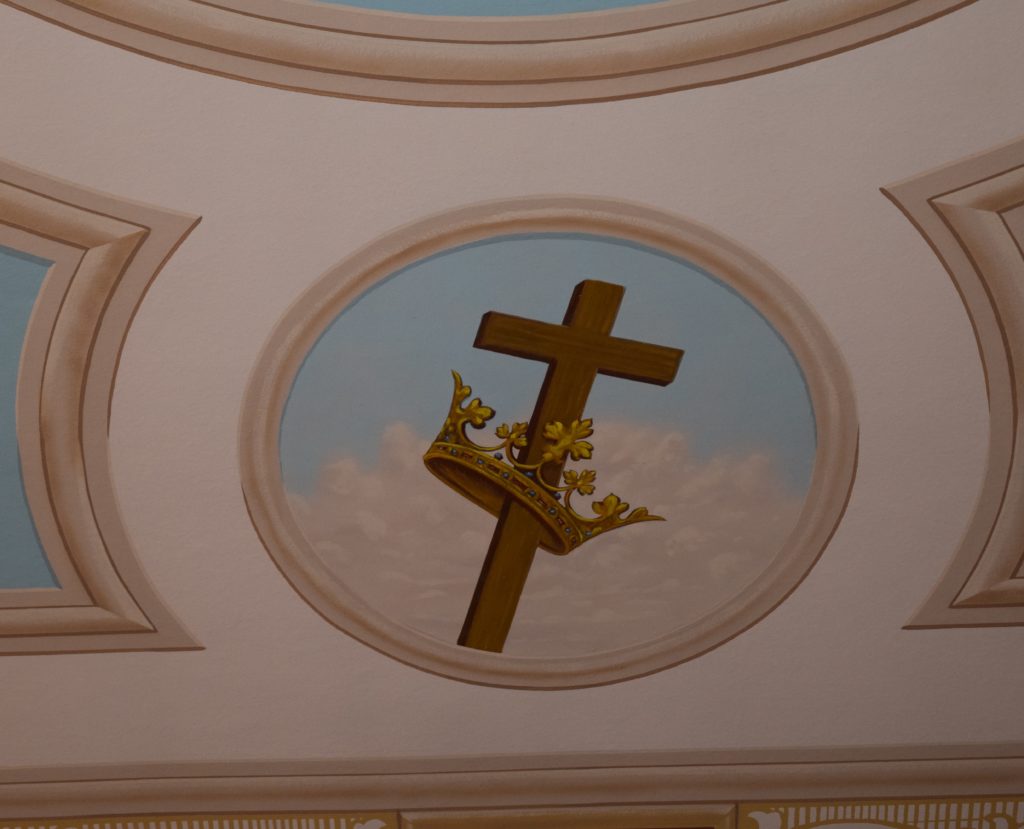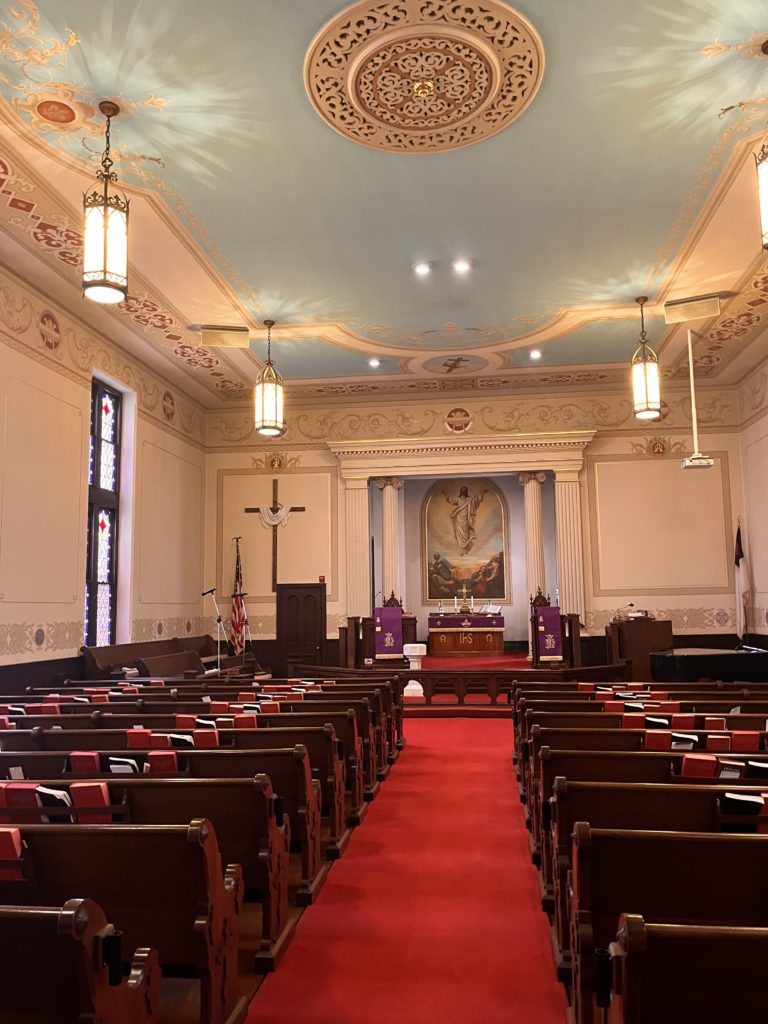
The first documented trace of Methodism in Middletown was from Francis Asbury’s Journal on Monday, July 25, 1796. “I stopped at Middletown, Wilmington, and Chester on my way to Philadelphia.” The next is a statement in May 1811 when he stopped in Middletown and baptized a child.
Bethesda Methodist Episcopal Church was founded on February 13, 1822. By recommendation of the congregation, the Board of Trustees resolved to open subscriptions for funds to build a new church building, and on September 2nd of the same year, John Hay’s offer of a lot of land for $50.00 was accepted. The building was 24 feet by 36 feet and cost $953.68 and was finished and opened for services on April 11, 1823.
Twenty-six years later, in 1849, the membership had grown and a cornerstone was laid for the new enlarged building of 50 feet by 40 feet.
Before becoming a member of the church, a person was a “member on probation” and was expected to attend classes held one night each week. There were three classes – Monday, Tuesday and Wednesday, led by laymen. After being approved by the Official Board of the Church, members were expected to continue to support the church by attending their class meeting during the week and church services on Sunday. Two services were held – one in the morning and the other in the evening.
Thirty years later, in 1879, the membership had grown and the congregation decided to enlarge the building. Eighteen feet was added to the alter end of the building, plus eight feet in the alcove. The organ was placed in the alcove. It is believed that it was a small pump organ. The tower and steeple were also added and the minutes show that an unknown friend presented a “magnificent bell of over 1,000 pounds of weight” for the tower.
The stained glass windows were installed at that time. They are not memorials to anyone so they were paid for by the entire congregation. During this period, Benjamin Briggs, a member of the church was Governor of the State of Delaware.A Springfield Gas Machine was installed for the gas lighting. In 1887, the official board voted to change the gas lighting to electric lightening at the cost of no more than $80.00.
This church is unique in the decoration of the walls known as “Frescoe” or “Victorian Baroque.” It has many symbols throughout: the symbol of the cross and the heart of love, on the ceiling behind the pulpit is the dove. Toward the rear is the cross and crown and the sword and olive branch: the monogram of Jesus Christ. The X and P are the Greek letters Chi and Rho representing the conquering Christ. Alpha and the Omega are the first and last letters of the Greek alphabet representing Christ as the beginning and the end. When these two symbols are shown together, they stand for Christ. “I am the Alpha and the Omega, the First and the Last, the Beginning and the End.” (Revelation 22:13 NIV)
In 1899, the altar was extended to accommodate a new Browne pipe organ, with its large organ box. Its blowers which were operated by hand, was on the first floor. Robert Richardson was an “organ boy”, sometimes operated the blowers.
The mural was painted in 1910 by Aldolf Frei of Philadelphia, a German artist of ability. It was said that he was an itinerant painter and was traveling through Middletown at that time and stayed at the parsonage while painting it. It depicts Christ at the Ascension with four of the apostles. Looking closely, you can see the nail scars in His hands. It is painted on canvas.
In 1947, the organ was replaced with a Wurlitzer organ which was given to the church by the Everett Theater. The old pipes were left in place. The Wurlitzer had been installed in the theater before the talkies in 1922. This organ was replaced by the present Rodgers electronic organ in 1965 for the total cost of $7,400.
In the late 1940’s, Bethesda was again growing and the congregation, seeing a need for Sunday school classrooms, a large meeting room, a kitchen, and an auditorium, voted to add the wing which is now Bethesda Hall. The cost of this building was $120,000. The cornerstone was laid in 1951 and the building constructed by Phillips Home Builders of Middletown. It has served the congregation and community well since that date.
The new parsonage at 107 S. Cox Street was bought in October 1971 from Joseph Cann. The money that was used to buy it was from the estate of Bertha Phillips and Jessie Shepherd Brennan. The house was purchased for approximately $36,000.
The old parsonage and the house just to the east of it were demolished in March 1972 to build the parking lot. The lot west of the church (108 East Main Street) was brought in August 1977.
Through the interest money from the Edith Donovan estate all the stained glass windows were repaired and re-leaded. The job took several years and was completed in April 1992.
A complete repair and painting of the sanctuary was started in December 1992. Starting in January 1993, worship services were held in Bethesda Hall. At this time, the company of Robert Thuman from Baltimore, Maryland moved all their equipment into the sanctuary so they could complete the job with ease. The goal before us was to be finished by Easter Sunday – April 11, 1993. The total cost of this project was $48,000.



116 East Main St, Middletown, Delaware 19709
© 2024 Bethesda UMC